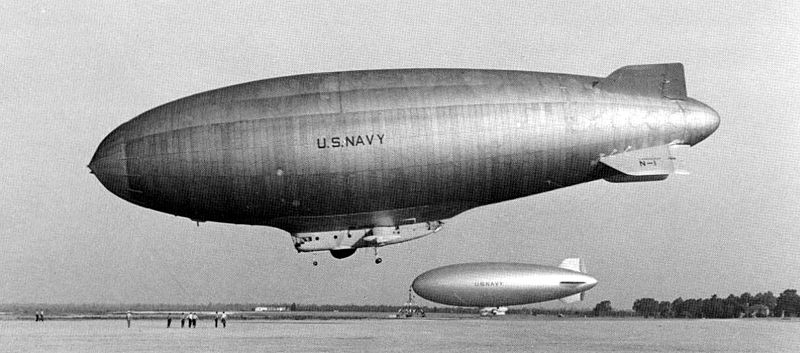Several caveats, and both articles forcefully include the most important one -- this would not be a fix for global
 warming, only a band-aid. The fix is the reduction and control of industrial processes, however that is accomplished. Fewer pollutants have to make their way into the atmosphere, no matter how many zeppelins we use to distribute sulfur to the stratosphere and no matter how many ships churn up seawater. Unfortunately, you have to read the whole articles in order to get to that point because both writers and both editors chose to put this information towards the end.
warming, only a band-aid. The fix is the reduction and control of industrial processes, however that is accomplished. Fewer pollutants have to make their way into the atmosphere, no matter how many zeppelins we use to distribute sulfur to the stratosphere and no matter how many ships churn up seawater. Unfortunately, you have to read the whole articles in order to get to that point because both writers and both editors chose to put this information towards the end.But the good news is, we don't have to cook ourselves to death just yet. And as time passes we may think of newer things to do or find cheaper ways to get the job done. The methods discussed would be expensive but (from a governmental or inter-governmental scale) not impossibly so.
 From an expense and political angle, the seawater option seems more interesting than the zeppelins. We could devise ways to retrofit existing vessels to do the job while they are engaged in other kinds of activities -- if every cargo carrier in the world churned up clouds in their wake, while moving our goods around the planet, that would apparently be enough to reverse mean global temperatures to what they were in the 1950's. It's also probably more politically salable because it doesn't involve strange-looking hoses shooting fifty thousand feet into the sky and belching sulfur into the environment we're allegedly trying to protect. Retrofitting all these ships would take some time and money, and presumably would be subsidized by the government(s) and benefactors funding the project.
From an expense and political angle, the seawater option seems more interesting than the zeppelins. We could devise ways to retrofit existing vessels to do the job while they are engaged in other kinds of activities -- if every cargo carrier in the world churned up clouds in their wake, while moving our goods around the planet, that would apparently be enough to reverse mean global temperatures to what they were in the 1950's. It's also probably more politically salable because it doesn't involve strange-looking hoses shooting fifty thousand feet into the sky and belching sulfur into the environment we're allegedly trying to protect. Retrofitting all these ships would take some time and money, and presumably would be subsidized by the government(s) and benefactors funding the project.Making a fifty-thousand-foot long, gas-impermeable hose would be a challenge from an engineering perspective. The hose would have to be damned strong -- strong enough, probably, to anchor the zeppelin to which it would be attached, and still be flexible enough to handle the swirling winds of the lower and middle atmosphere. Whatever sheaths the skeleton of the hose would need to be, again, both strong and flexible while not allowing the gas inside to escape. But it doesn't seem like the sort of thing that engineers would be unable to get done. The real problem would be fixing the hose when something breaks on it, especially above helicopter-accessible altitude.
We'd also have to make our air traffic control practices significantly more complex in order to prevent aircraft and spacecraft from hitting the hoses and the zeppelins. Again, this is more demanding than what we're doing now, but fairly obviously within our reach if we were to really try.
Besides, hoses twisting their way into the sky just look creepy, like something from The Matrix.
Satellites would become somewhat less useful with increased cloud cover. Many satellites do not do things for which visibility is an issue -- television relays, for instance, operate at a frequency for which visible light matters. But observation and weather satellites do use optical data of the Earth, and if we cloud up our skies, they will be less useful. One of the unintended side-effects of these ideas would be increased use of reconnaissance aircraft, both for military and governmental purposes as well as for scientific and other "peaceful" sorts of activities. Reconnaissance aircraft are, however, quite expensive to fly, even as compared to other sorts of air traffic, and there is nothing other than petroleum-based fuel that can effectively power an aircraft.
Increased cloud cover would also result in increased rainfall. From where I'm sitting in a state savaged by a seven-year drought, more rain sounds pretty good. For places watching their glaciers and snowpack recede -- things that are necessary to keep enough fresh water in their ecosystems -- that also sounds pretty good. But if I were in places like Bangladesh, portions of the American and Canadian midwest, which are prone to very destructive flooding every couple of years, increased rainfall would sound like a significant threat.
On the other hand, increased rainfall and snowfall would mean increased access to fresh water globally. Water is life, and more rain means more crops -- and less reason for countries to intrude on one another to get the water. It's not hard to imagine that wars will take place, this century, for control of fresh water. Some people believe that China is acting the way it is towards Tibet (that is to say, incorporating it into metropolitan China, sometimes forcefully and in a way destructive of Tibetan culture) in order to make sure that it controls the fresh water sources in the northern Himalayas and the Tibetan plateau -- China has a billion people who need to drink and its primary agricultural product is rice, possibly the most water-intensive crop available. If there were not a perceived need to protect this source of water, the PRC might be more willing to permit Tibet the status of a semi-autonomous region like some other provinces in its northwestern deserts.
The phenomenon of global warming is real enough. The causes of it are as-yet indeterminate but likely to be based in industrial and/or vehicular pollution. Sulfate-spewing stratospheric zeppelins and cloud-seeding sea vessels are not the answer. And they would have indirect consequences, which I've only explored a little bit here. But they might buy us time to solve environmental problems while we work out how to balance our economic needs with environmental imperatives.







No comments:
Post a Comment